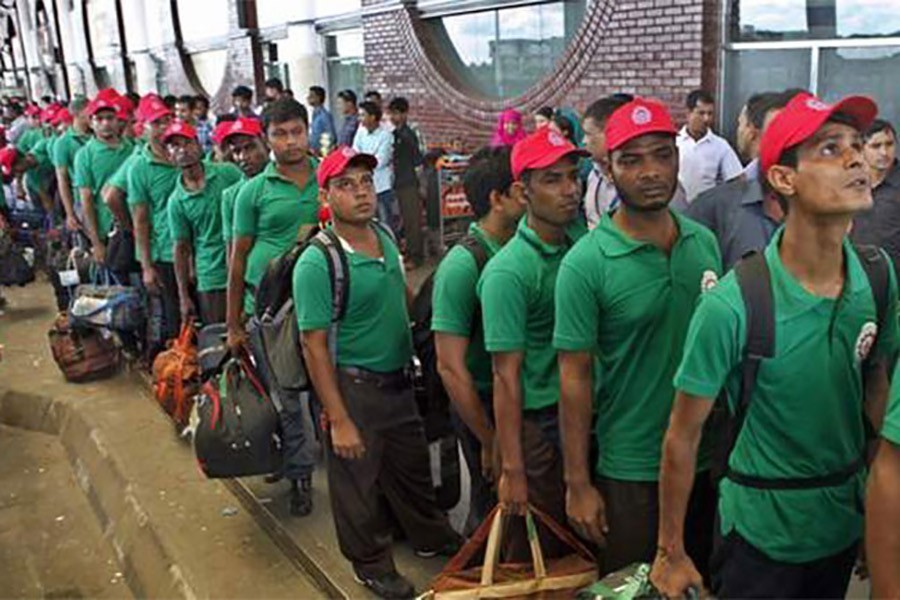It feels good -- and so it should -- to see that overseas workers' migration has taken a momentous leap following a lull for around two years now. Reports say labour migration to overseas destinations has not only bounced back to almost normal at the fag end of the last year but has exceeded the number of outgoing expat workers in any single month. In the month of December, 2021, more than 130,000 migrant workers left the country for jobs abroad, mostly in the Gulf countries. The figure is reportedly the single-month highest in the country's history. Concerned quarters have attributed this recovery of overseas employment to brighter Gulf economies nourished by rising oil prices, containment of the Covid situation, and ease of restrictions. Also, increase of quota for Bangladeshi migrants at Saudi firms to 40 per cent from 25 per cent has propelled this growth. All these have eased the movement of workers who had been stuck at home in the pandemic time to get back their jobs, and newer avenues have also opened up for fresh job seekers. It is expected that following the withdrawal of moratorium by Malaysia on recruitment of workers from Bangladesh and the G-2-G scheme to be in place soon, Malaysia would again become one of the prime destinations of the migrant workers.
Increased workers' migration is indeed good news, but not without the archetypal 'tag' that defines Bangladesh's expat workers-- unskilled labour. The large number of workers leaving the country to either join their previous workplaces or those going afresh are mostly unskilled, according to reports. Although the relevant government agencies often speak of developing skilled manpower for overseas jobs and a few programmes have also been launched, it is hard to find any noticeable reflection of the effort on those going abroad for jobs. Saudi Arabia, the top destination for Bangladeshi migrants, generated around 74 per cent of all overseas jobs last year, followed by Oman, UAE, Singapore, Jordan and Qatar. Most workers in SA and Oman have gone for cleaning and construction jobs. Only a small number of skilled and semi-skilled workers were among those who left for different countries as plumber and electrician.
It has been learnt from an estimate of the Refugee and Migratory Movement Research Unit that there has been an increasing trend of unskilled migrant workers, rising to around 75 per cent in 2021 from what was little over 41 per cent in 2020. This does speak of the government's failure to add value to the workers' jobs who being what they are-- unskilled or at best semi-skilled -- are at the bottom rung of wage earners, compared with those from other countries.
Overseas jobs not requiring specialised skills has for long been the main attraction for the huge majority of the Bangladeshi workers-- at the expense of poor wage. It has been emphasised time and again from various quarters that the situation has to change. In order to sustain workers' migration as a major source of earning, the onus is squarely on the government to facilitate conditions for workers to be skilled in targeted work areas before they make it to overseas work places, and thus help them climb the wage ladder.


